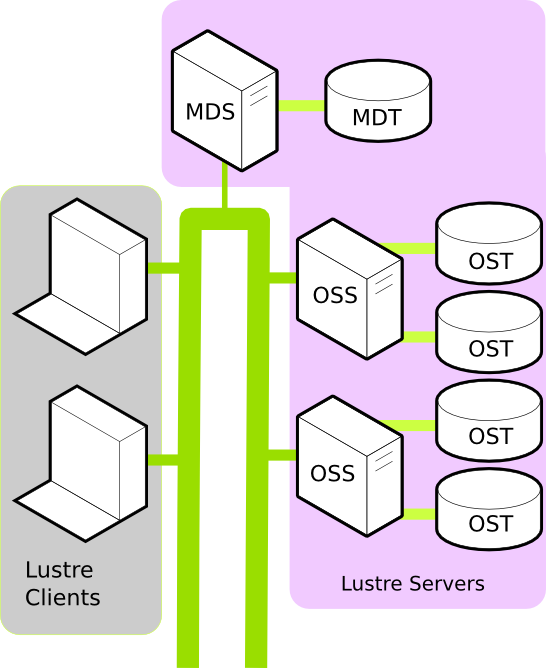
The Lustre filesystem software is build on-top of the Linux kernel. Because Lustre is designed for the most demanding high performance environments, modifications must be made to a stock Linux kernel to create Lustre servers. On a client, a Lustre filesystem is mounted with a Linux kernel module – and this does not need a modified kernel.
The fastest way to begin provisioning your machines into a Lustre filesystem is to use a pre-built Linux kernel with the Lustre patches already applied. A Lustre patched Linux kernel can be configured at run time to become a MGS, MDT, MDS, OSS, and OST server. An overview of these different server roles can be found in the Components of a Lustre filesystem document.

|
Whamcloud provide pre-built Lustre patched Linux kernels based on the CentOS stock kernel. Two builds are available, 1.8 and Master. Master includes some features that will make it into the 2.1 release. These kernels are simple to install and have completed the Whamcloud test suites. Further information on the Whamcloud Lustre test suite is available here LINK TO WHAMCLOUD TEST STUFF
A separate page provides further information on working with pre-build images.
The Lustre filesystem code is available as source code under the GPL2 License. Patching a Linux kernel with Lustre patches requires:
Lustre patches are readily applied to a number of stock kernels and versions, these include: CentOS, SLES, and Debian. A complete list of the supported kernels is available on A PAGE WITH A LIST OF THE SUPPORTED KERNELS
Lustre source code available from Whamcloud repositories contains both Client and Server code. The Whamcloud Lustre source code is available at WHAMCLOUD GIT REPOSITIES and contains 1.8 and Master branches.
Patching and building a Kernel is a complex task is machine architecture, network and RAID drivers. Walk-thrus are available for the following stock kernels: